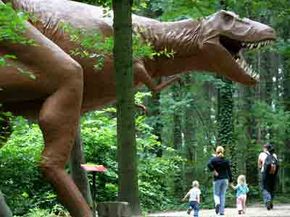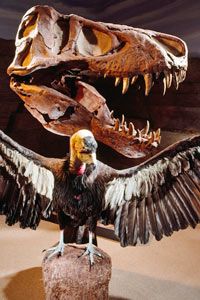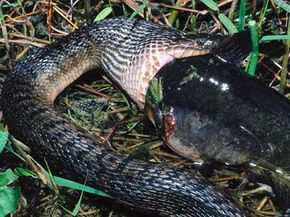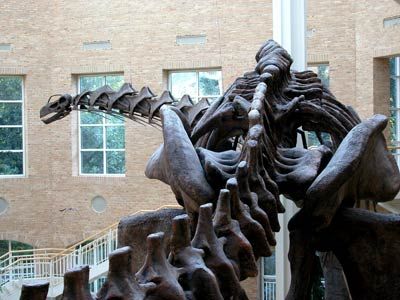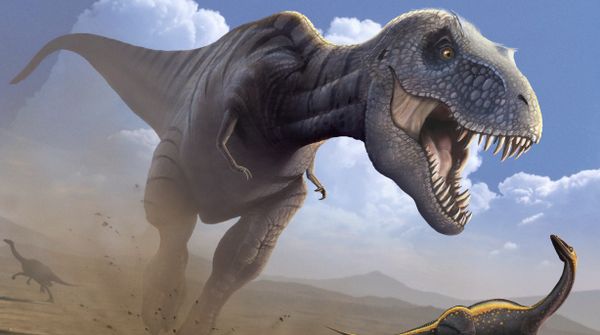In everything from blockbuster movies to the imaginations of children, Tyrannosaurus rex is a bloodthirsty predator. It's fast and agile, able to chase down a Jeep and recover from being bowled over by King Kong. If you stand in front of a full-size T. rex skeleton in a museum, your own instincts might support that idea. The same would be true if you found yourself face to face with any other member of its family, Tyrannosauridae. These dinosaurs all had armlike forelimbs, a bipedal gait and huge mouths full of startlingly jagged teeth.
Dinosaur Image Gallery
Advertisement
Most of the time, the Tyrannosauridae were the largest carnivores in their respective ecosystems. And aside from Hollywood drama, there's some fossil evidence to suggest that they deserve their reputation as aggressive predators. From the side, a tyrannosaurid's jaws look like saw blades made from long, daggerlike teeth. The teeth themselves are serrated, too, ideal for cutting their way through meat. According to analysis of skull fossils, Tyrannosaurus could bite down with a force of 183,000 to 325,000 newtons (3,822 to 6,788 pounds per square foot) [source: Meers]. Other researchers used the damage from a T. rex bite on a Triceratops fossil to estimate that the tyrant lizard's bite exerted a force of about 3,000 pounds (143,641 newtons), similar to the bite force of an alligator [source: Leutwyler]. Either way, T. rex's bite would be an ample weapon against large, prehistoric prey.
In contrast to its relatively small arms, T. rex had powerful legs. Its thigh bones were relatively long, a trait common in animals with good running endurance. This suggests that a tyrannosaur's legs were adapting for traveling over long distances for long periods of time, perhaps to chase down other dinosaurs.
Not all of the evidence for a predatory nature in T. rex comes from its own fossils. Many of the prey species that lived at the time have elaborate body parts that can be interpreted as defense mechanisms. Triceratops, for example, has a bony frill protecting its neck in addition to the three horns for which it is named. Though there were other predators against which the frill would be useful as defense, T. rex would have been the largest most of the time.
But how does this evidence stack up to the other side of the coin -- the idea that T. rex was basically a giant Cretaceous vulture? Would those powerful legs really allow a massive dinosaur to move quickly enough to capture prey? And is there any evidence that tyrannosaurids hunted? We'll explore these questions on the next page.
Advertisement
